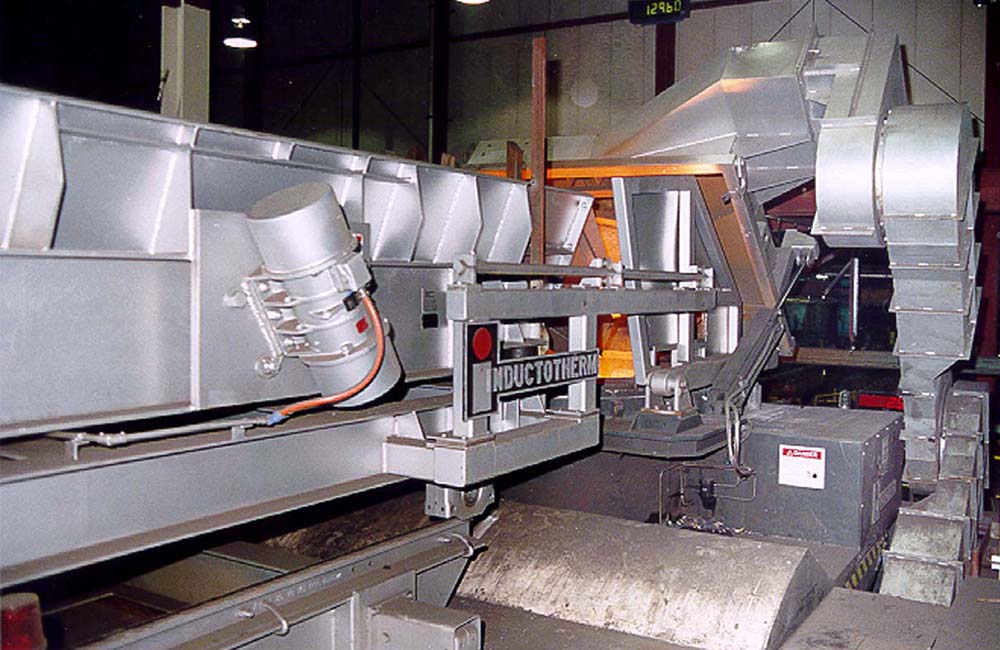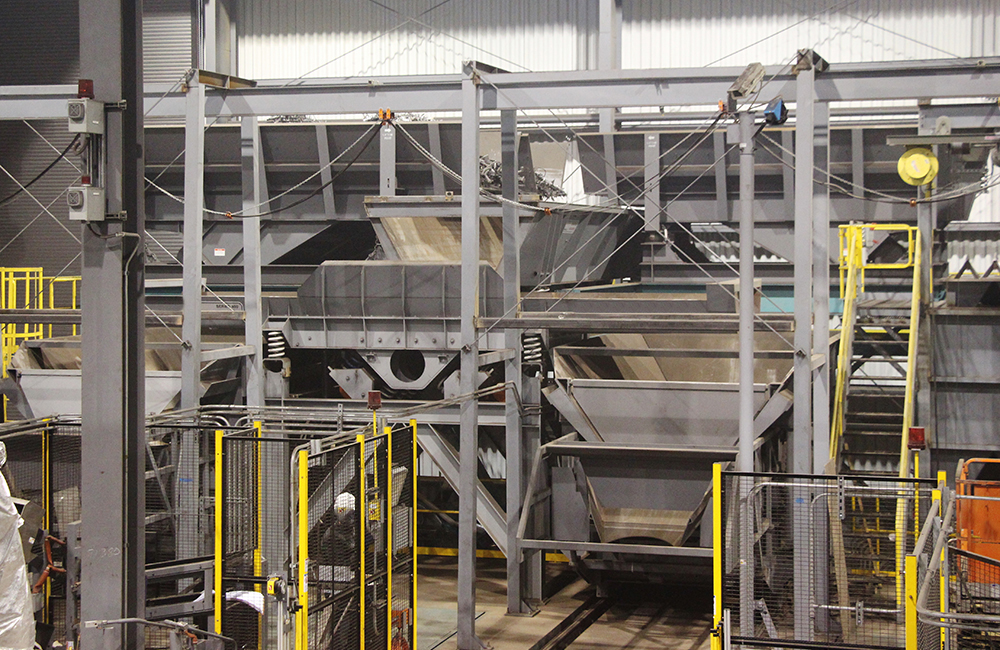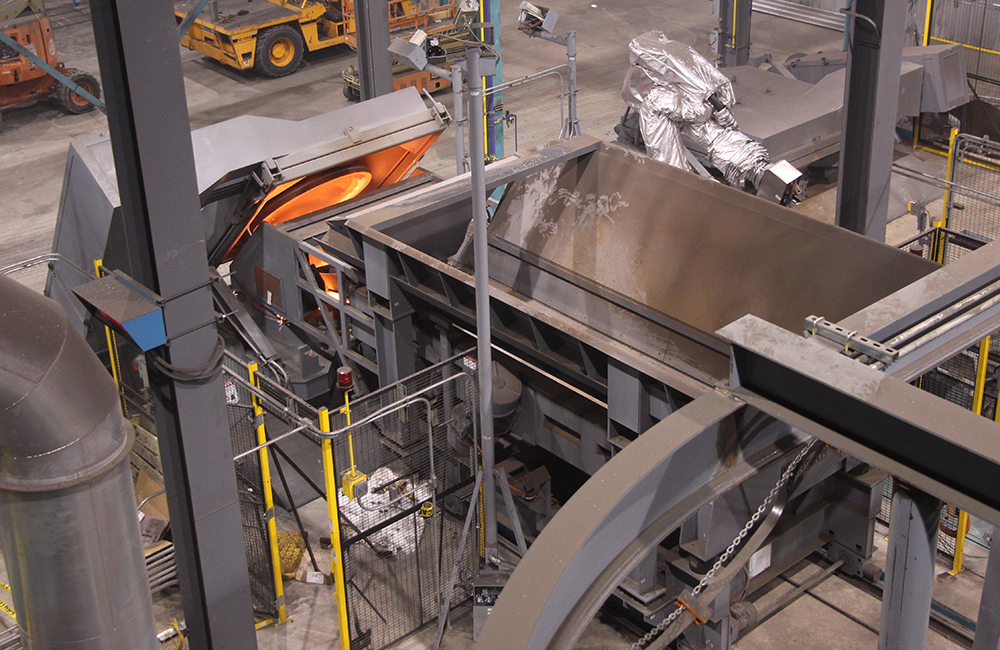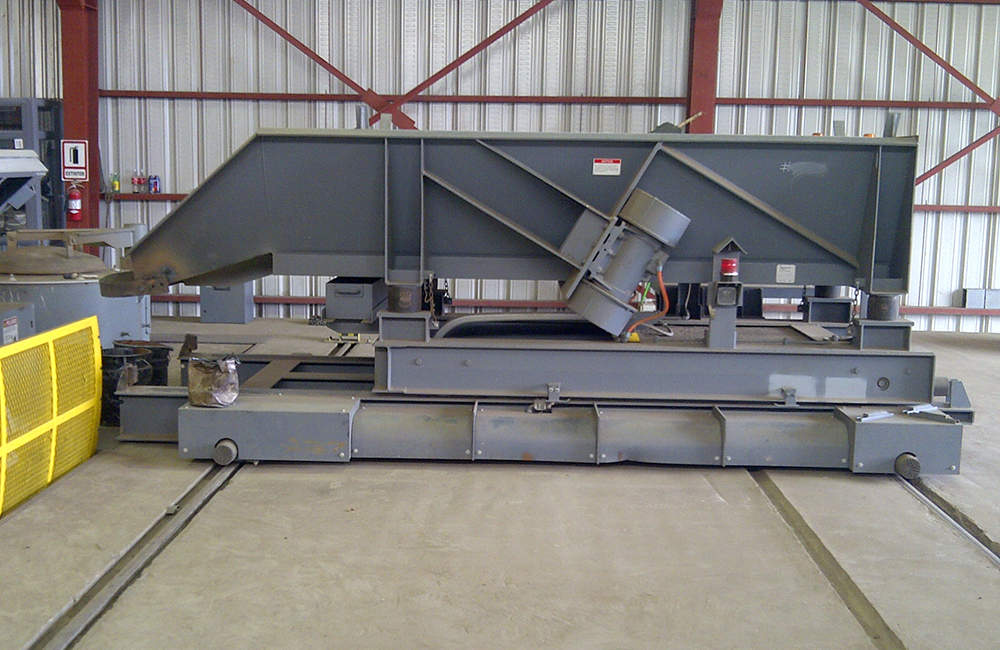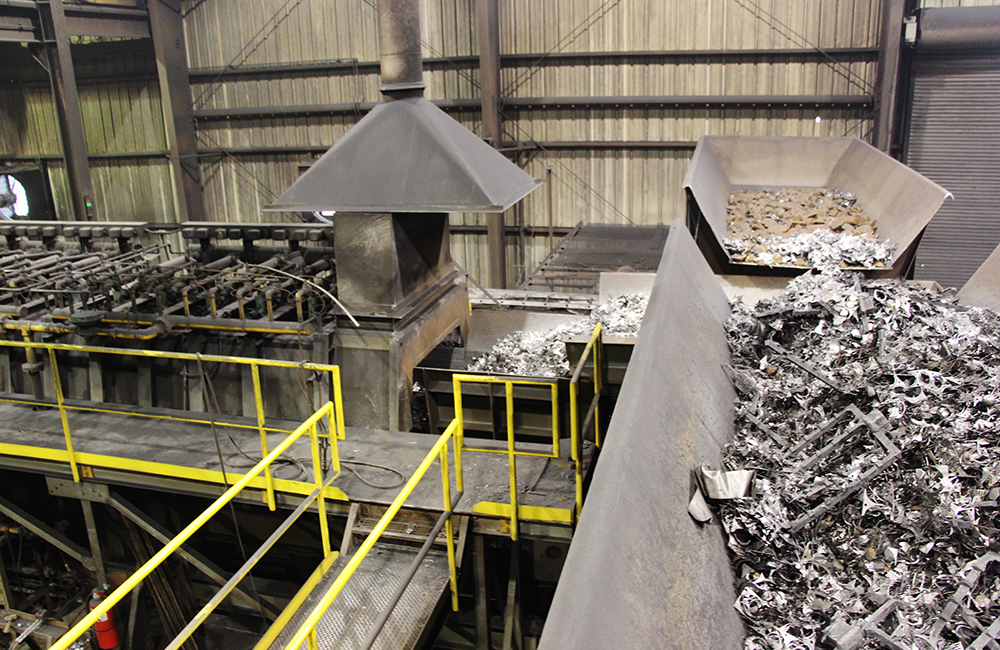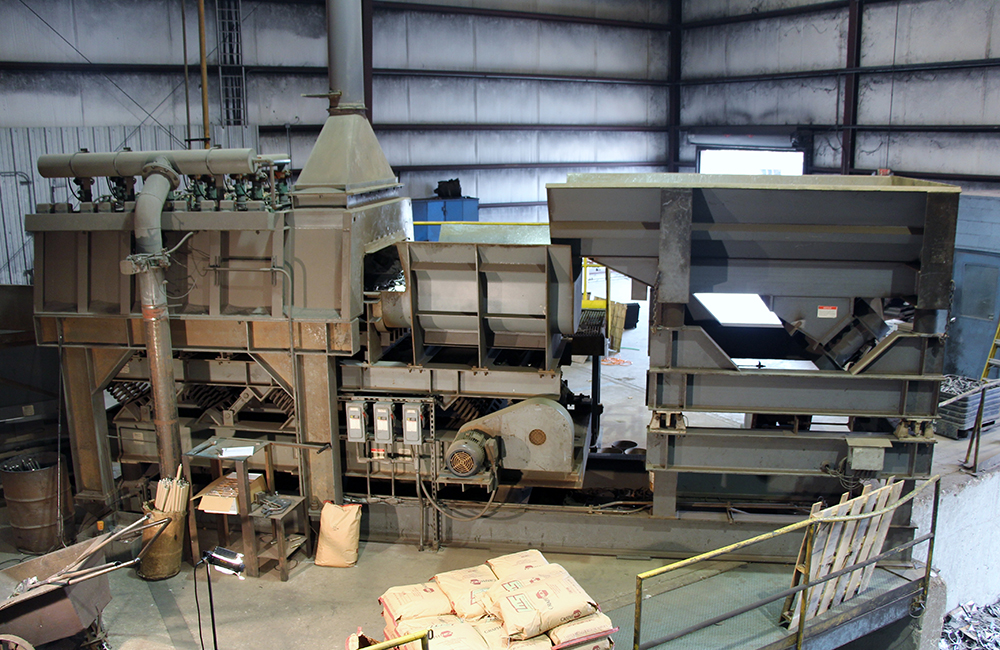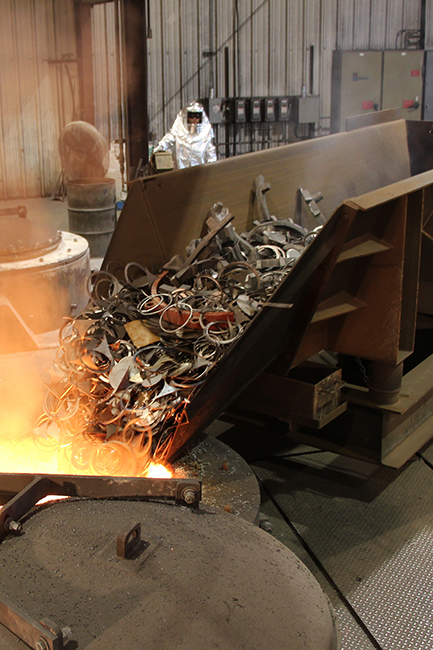
Furnace Charging Systems
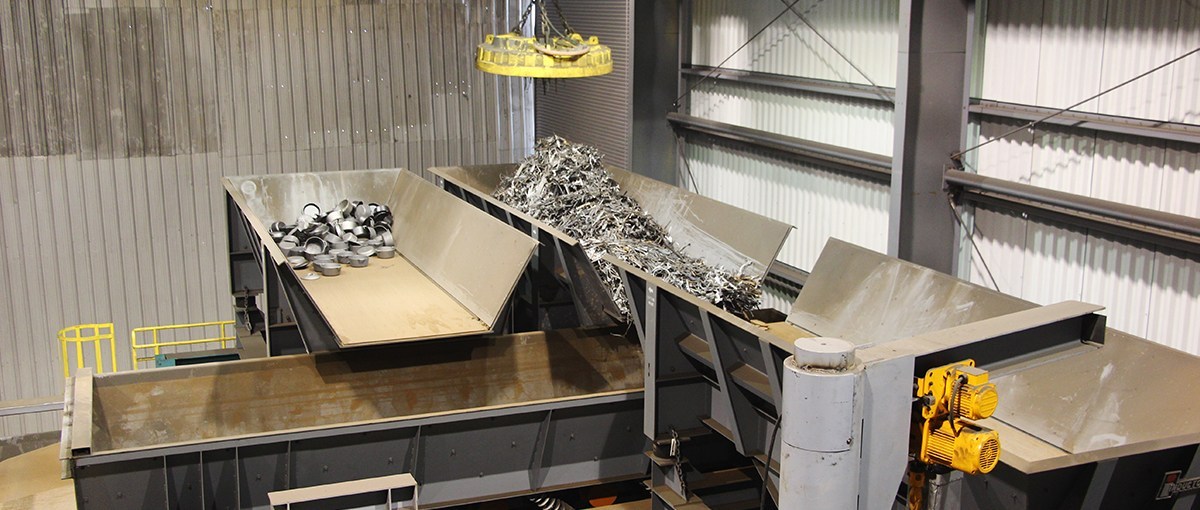
With the advancement of induction furnaces and their increasingly shorter melt times, furnaces charging systems can help increase production speeds. They do this by supplying the metal required quicker than manual methods while enhancing worker safety.
Furnace Charging System Options
Furnace charging systems are designed to deliver charge material to the furnace quickly to allow for maximum utilization of the melting system. We offer a variety of systems for assembling and moving scrap and other charge materials to the melt deck and into the furnace. These systems include charge buckets, belt conveyors and vibratory, pivoting, traversing and holding conveyors. Manual charging, magnets or charging buckets have difficulty keeping pace with large induction furnaces that are able to melt a full charge in less than 30 minutes. Furnace charging systems are available in various configurations and modes of motion. In general, charge transportation systems can be divided into four categories: electromagnet cranes, belt conveyors, buckets and vibrating conveyors.
Cranes
Cranes with electromagnetic lifting devices pick up charge materials from holding areas and move them to a weighing hopper or other charge makeup equipment. Used in this way they are ideal. They are not ideal when used to charge induction furnaces directly since the diameter of the magnet must not be larger than the diameter of the furnace opening. This limits the carrying capacity of the crane and may prevent charging from keeping pace with melting. Also, Electromagnets may be more sensitive to furnace heat than other furnace charging systems.
Belt Conveyors
Belt conveyors provide an effective way to move charge material from a lower level to a higher level, such as from a scrap storage area to a holding hopper on the melt deck. They are fast, quiet and generate minimal dust.
Bucket Charging Systems
Bucket charging systems are useful when there is adequate overhead space to accommodate it and its carrying mechanism. The key to a successful bucket-charging operation is an effective system for filling, moving, emptying and returning the buckets. Bucket charging systems must be used with charge drying or preheating systems for safety. Like belt conveyors, buckets are quiet and clean.
Vibratory Conveyors
Vibratory conveyors are the most versatile and rugged of all furnace charging systems. They may be in fixed positions for holding, consolidating, weighing and transferring charge materials, or they may be extremely mobile. In addition, vibrating conveyors have been built to transverse, pivot and index, all in the same unit. As a result, this mobility enables a vibratory conveyor to service any number of furnaces. Largely unaffected by heat, vibrating conveyors are ideal for feeding charge materials directly into an induction furnace that typically run at full power during the charging process.
Need help sizing your furnace charging equipment?
Determining the size of a charging system is vital to its ultimate success. Therefore, it must be large enough to promptly replace the metal poured from the furnaces and be appropriate to your method of operation, either tap and backcharge melting, or batch melting. Contact Inductotherm today to speak with someone who can ensure you get the right material handling system for your application.
Ultimately, whether you use belts or buckets or vibrators or cranes, the final furnace charging system configuration depends largely on the physical layout of your melting facility. Ceiling height will determine if your facility can handle buckets. Floor space and elevations will largely dictate the types of conveyors required to do the job. Key considerations are mainly safety and the ability to keep pace with the melting furnaces need for charge material.
Tech Specs
| Charge System Types | Factory Tested |
|---|---|
| Charge Buckets | Critical Components |
| Belt Conveyors | |
| Vibratory Pivoting Conveyors | |
| Indexing Conveyors | |
| Traversing and Stationary Holding Conveyors | |
| Crane with Electromagnets | |
| Robotic Grappling Systems | |
| Automated Batch Make-Up and Delivery Systems |
